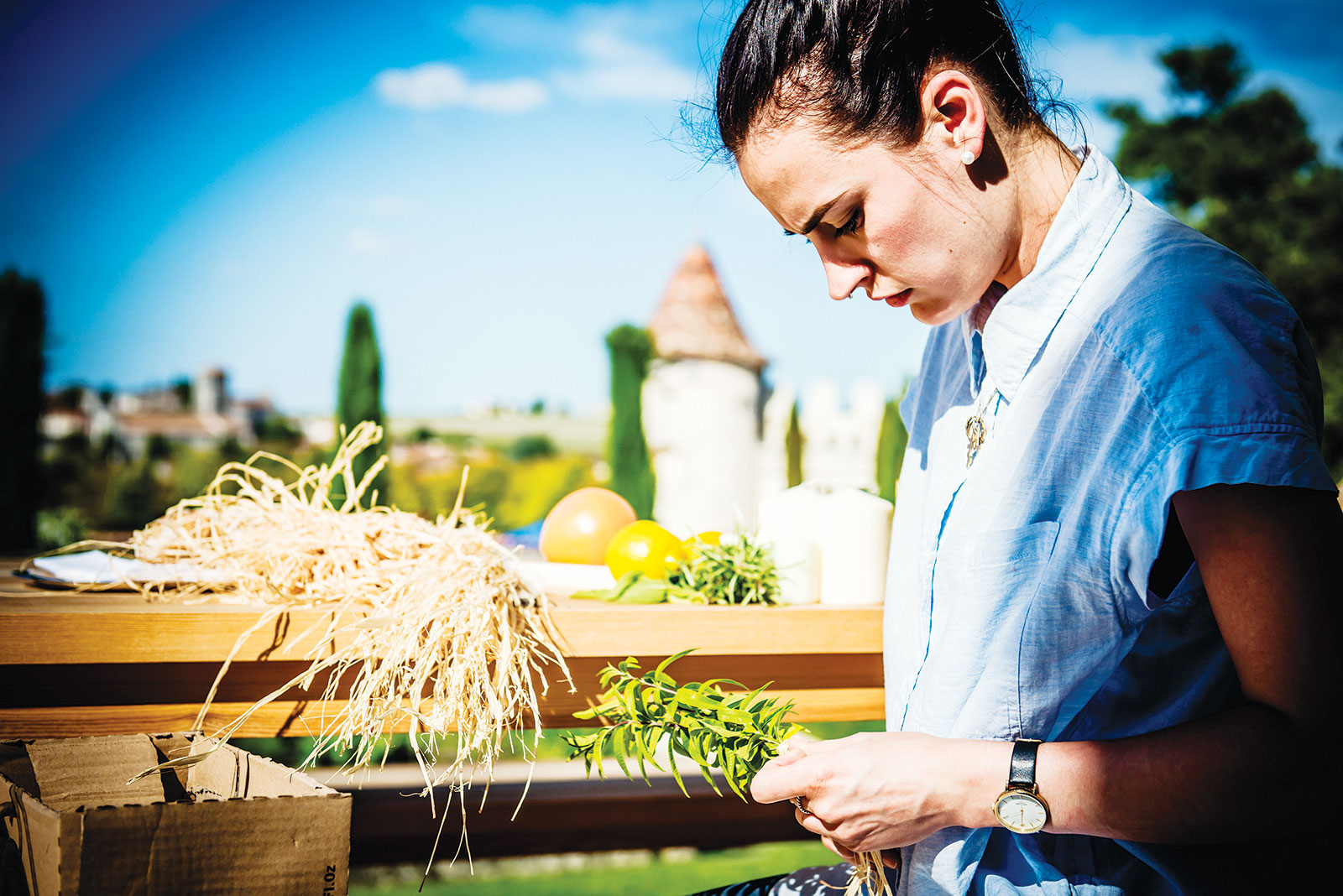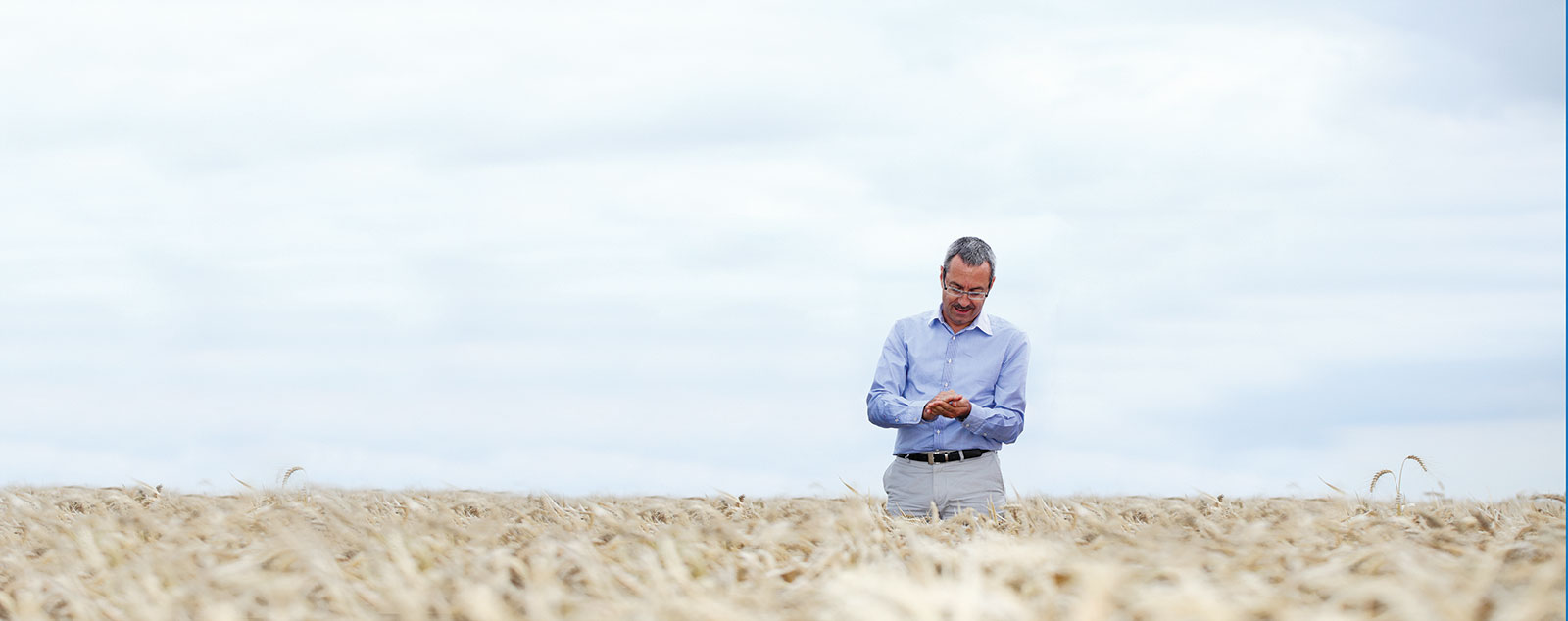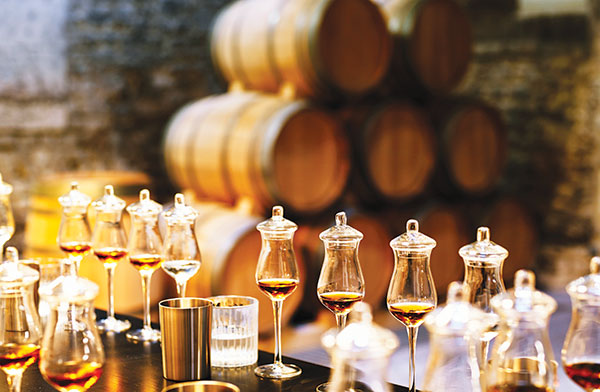NIFTY SHAKES

“Learn your product. Know your judges. Get creative. Stay inspired. Be prepared.”
– Kevin Brownlee, Champion, 2015 Grey Goose Pour Masters competition
The Great Northern Bartender (tenderus miximus, GNB) is a curious creature. Oddly averse to daylight, these denizens of the nocturnal underworld have traditionally been somewhat unassuming — content to lurk in the smoky shadows, “dancing” while “behind the stick.” Gladly catching a “boomerang” while shunning “drain pours,” GNBs delight in “staff meetings” and are never opposed to a “handshake.” They even have their own mysterious dialect (all “those” aforementioned words).
In my years of fieldwork, I’ve found these organisms to be a rather friendly and intelligent lot, despite their sometimes extreme and intimidating predilection towards ritualistic tattoos, body piercings and — for the male of the species — facial hair.
In any case, GNBs and their ilk have evolved considerably. They still duck daylight, but have no real issue with basking in limelight. Much like their culinary counterparts, some have become stars. With fame comes competitiveness. And I have witnessed this trait firsthand on several occasions in the form of the cocktail competition — the modern gladiator arena of professional booze slingers.
“Most competitions are organized by spirit brands themselves,” reveals Maryline Demandre, Communications Director for Made With Love, a cocktail competition that began seven years ago with just a handful of competitors. It is now the largest competition in Canada with an aim to grow and promote the cocktail culture.
The fact that Made With Love does not revolve around any particular brand or brands makes it somewhat unique. In the case of the Grey Goose Pour Masters competition, the company in question produces the iconic, ultra-premium Grey Goose Vodka. And the 2015 mix-off finale really was something to behold, notably because it featured four of Canada’s top mixing wizards. Also, it took place in Cognac, (in the hamlet of Julliac le Coq, to be exact) at Le Logis, the restored 17th-century French manor house that acts as the physical and spiritual (ahem) home of Grey Goose Vodka. So not a bad locale to mix up (and knock back) some cocktails.
Purchased by Grey Goose in 2012 and meticulously renovated and refurbished, the elegant Le Logis would be the residence for the four Pour Masters regional finalists as they geared up for the final mix-off. These included Kevin Brownlee, from Vancouver’s AnnaLena (who would ultimately rein as grand champion); Jeff Savage, of Calgary’s Proof Cocktail Bar; Juliana Wolkowski, of Toronto’s answer to a Basque pinxo bar — Bar Raval — and Montreal’s Jonathan Homier (who was with Le Saint-Édouard at the time and who, after the Pour Masters competition, was taken on as a Brand Ambassador for a popular American whiskey).
Mostly I’ve watched GNBs tough it out in their Home and Native Land. But seeing them ply their trade on foreign shores with local, all-French ingredients, was indeed a unique experience. Part of the challenge facing the competitors was to craft an original, palate-seducing, judge-dazzling cocktail using the range of Grey Goose vodkas, whatever they could find behind the Le Logis bar (a formidable collection of popular and practically never seen potables … Benedictine Single Cask, anyone?) the herbs and berries found in the Le Logis greenhouse and surrounding grounds, and other components sourced from local shops. In fact, the seasonal ingredient list included close to 40 fruits, herbs, roots and botanicals.
However, before la grande finale, there was some serious eating, drinking and learning to do.
Every spirit, to varying degrees, is a blend. And it’s the talent of the master blender (in France, the maȋtre de chai) to create the formula and oversee its volume production (among other things). Before becoming the mind behind Grey Goose Vodka, François Thibault worked in the cellars of H. Mounier, honing the skills that would become invaluable in the creation of luxury vodka.
It’s tempting to ask, “Why vodka?” considering the Cognac region is known for (arguably) the world’s finest brandy. However, in his characteristically curious way, Thibault instead asked, “Why not?”
Born, raised and still living among Cognac’s rustic villages, undulating hills and sprawling vineyards, Thibault knew without a doubt that all the ingredients he would need for his new distilling project lay at (or under) his feet. In particular, the winter wheat from the Picardy region — also known as the breadbasket of France. Flour from this wheat makes its way into the finest breads and pastries the country makes. (It also made its way into the bread we whipped up in a fun little baking session in the Le Logis kitchen). When combined with the pristine, limestone-filtered water extracted from 150 metres below the soils of Gensac-la-Pallue, this soft, nutty-flavoured grain was transformed into the mash that, in turn, would be distilled and blended under the watchful eye and exacting standards of Thibault. But before we got a firsthand taste of the Grey Goose line, Thibault took us into the Le Logis cellar for a short seminar on how wood aging effects a spirit. Wood aged vodka? Not exactly.

As mentioned, Cognac, the region, and cognac, the spirit, both run through Thibault’s blood. And his respect for the (traditional) spirit of the land — and the traditions that surround its production — remain strong to this day.
The Ugni Blanc grape variety grown in the nine hectares of vineyard that surround Le Logis (and in vineyards all over the region) are fermented into a rather neutral, acidic white wine prior to distillation, barrel maturation and blending. To demonstrate the influence of oak aging, Thibault took us through a range of cognacs: the water-white, floral/peppery/slightly earthy un-aged “new make;” the slightly more tempered five-year-old with aromas of vanilla, marmalade and spice, and more overall balance on the palate; and finally, a 10-year-old — caramel, toffee, cocoa and fruitcake on the nose — smoother, richer and more complex than the rest. So Grey Goose is making cognac? Not exactly.
But cognac does play an important role in the formulation of Grey Goose VX, which we tasted along with the entire range of vodkas during the course of a seminar Thibault led. Walking us through the production process — from grain to glass — he pointed out some of the features that make his spirit unique; and uniquely French. With the exception of the Florida oranges used for Grey Goose L’Orange, all ingredients are of French origin, right down to the ink used to adorn the bottles. And while many vodka producers laud the fact that their spirit has been distilled and filtered numerous times, Thibault favours but a single distillation to preserve character.
Later that day, while the bar stars headed out to collect cocktail ingredients, I had a personal tour of the Grey Goose blending and bottling facility and was shown the rigorous quality control standards — all overseen by Thibault. In fact, each Grey Goose bottle sports two distinct serial numbers. One allows for the tracing of lineage of the glass bottle itself, while a second, applied after bottling, is used to determine (in the remote chance of a flaw being detected) where in the distillation process it may have occurred.
As the sun began to slip behind the horizon, I was back at Le Logis, lounging poolside with a Grey Goose Le Fizz cocktail in hand. As the contestants made final preparations for the mix-off ahead, I was able to get more insight into how cocktail competitions unfold, and what sort of mental and physical preparation is required.
“I use a mental map,” Savage explains. “I create a ‘web’ of flavours — either in my head or on paper — so I can visualize how the ingredients will work together. My rule of thumb is that all ingredients either have to complement or contrast each of the other ingredients in the drink. If I can make that work, the drink should also work. From there, it’s just a matter of building the drink and tasting for small tweaks.”
For Brownlee, a cocktail needs a story. And indeed, his storytelling prowess was to be one of the things that impressed the Pour Masters judges.
“I often start with a story and write myself a rough outline of what the drink is about; what it means to me. This really helps me prepare a unique cocktail for competitions. I try to pair flavours with themes in my idea, and then I look to see what works with the product we’re working with. Once my parameters are defined, then I start playing around with ratios and serving methods. A lot of what we do is to bring subtle nuances to drinks that are already out there; but it’s a matter of doing things in a way that is true to our own personal style, and original in itself.”
 Sometimes preparation involves taking a situation that normally wouldn’t necessarily lead to clear, creative thinking and turning it around. “I was very jet-lagged and couldn’t sleep the night before the competition,” Savage recalls when later asked if he did anything special to get ready for the Big Night. “So I used that to my advantage. I went out to watch the sunrise over Cognac, and took one of the bikes out to ride amongst the grape vines. I allowed the history and spirit of Cognac to inspire me.”
Sometimes preparation involves taking a situation that normally wouldn’t necessarily lead to clear, creative thinking and turning it around. “I was very jet-lagged and couldn’t sleep the night before the competition,” Savage recalls when later asked if he did anything special to get ready for the Big Night. “So I used that to my advantage. I went out to watch the sunrise over Cognac, and took one of the bikes out to ride amongst the grape vines. I allowed the history and spirit of Cognac to inspire me.”
After a photo session in the Le Logis garden, Brownlee, Homier, Savage and Wolkowski — each with their personally selected quiver of ingredients and each armed with a unique shaking style — poured out the goods to a three-member judging panel that included Thibault. Though it was Brownlee who ultimately flew beyond the competitors as the ultimate master with his La Marionette de Mary, all contestants left Le Logis as winners, in a way, with unforgettable memories and lasting friendships.
“It was so intimate,” Savage recalls. “I learned a lot from Kevin, Juliana and Johnathan, and we became close quickly. Grey Goose set up the conditions for us to thrive. We really enjoyed each other’s company in one of the most beautiful places I’ve been.”
For Brownlee, a game of pétanque and grilled cheese sandwiches at four in the morning certainly stuck in his mind. But it was the ability to not only compete against, but also befriend, other bartenders of equal talent that had the most impact. Though Demandre points out that a win in a prestigious contest can certainly bring monetary and career-enhancing rewards, for Brownlee, it is also a personal affirmation.
“For me, it’s a reassurance that with hard work and dedication comes reward. I don’t ever consider myself to be better than anyone because that’s not how I look at life. But it’s good to know that when other competitions are taking place, my fellow ’tenders are very aware of who is playing ball that day.”
Top image: Juliana Wolkowski from Toronto’s Bar Ravel
